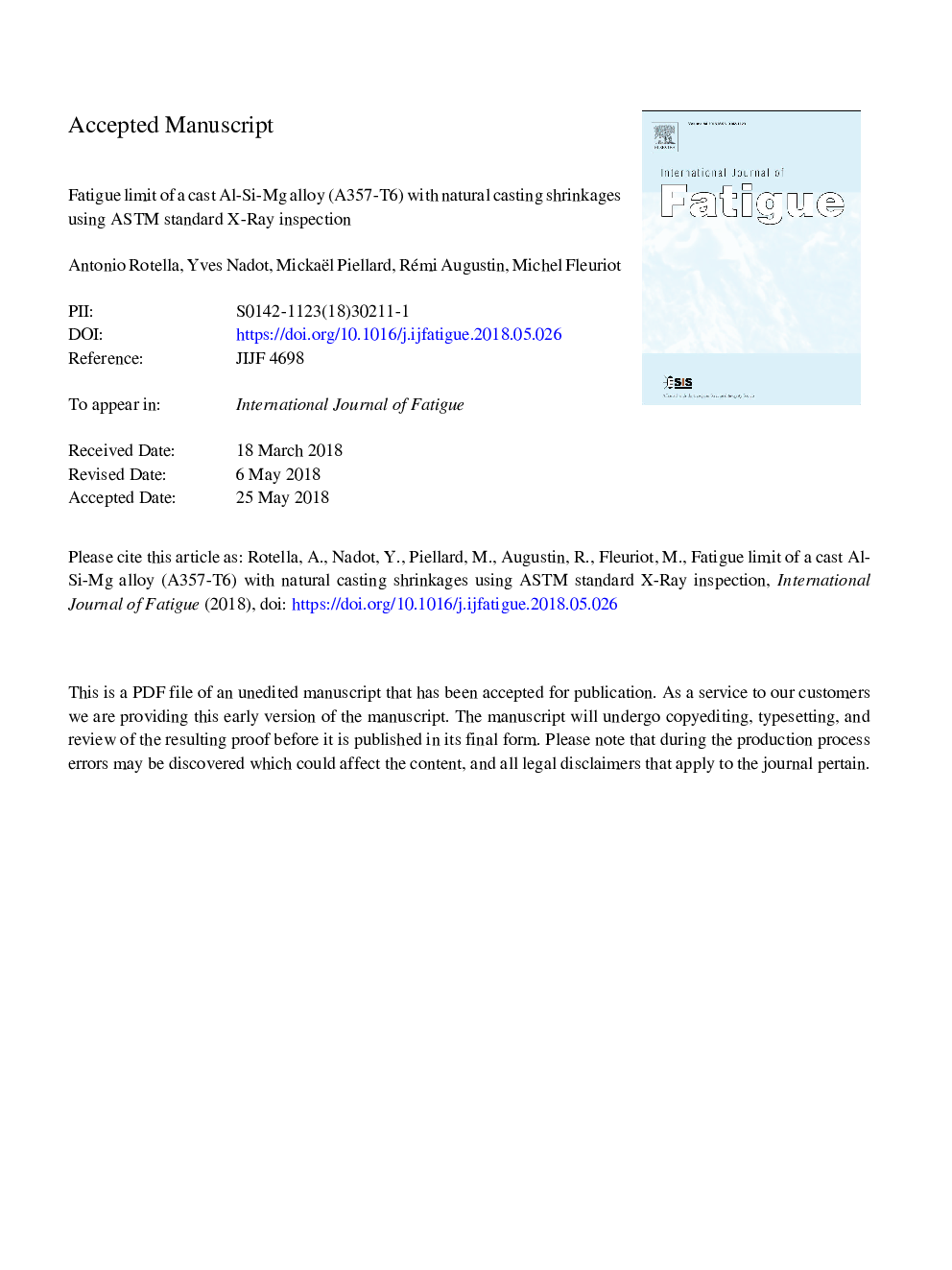| Article ID | Journal | Published Year | Pages | File Type |
|---|---|---|---|---|
| 7171393 | International Journal of Fatigue | 2018 | 31 Pages |
Abstract
This work aims to quantify the effect of natural shrinkages on the fatigue limit of A357-T6 cast aluminum alloy. The main objective is to characterize the fatigue strength of the alloy following the ASTM X-ray standard defect identification, by correlating a different ASTM indication to a fatigue limit reduction. The analysis has been conducted on six customized castings with two defect types (cavity and sponge shrinkages) and a different harmfulness ASTM grade as defined by Non Destructive Testing (NDT) standard. The effect of the defect size has been correlated with the ASTM grade and a Kitagawa-Takahashi diagram has been generated for surface defects. A micro Computed-Tomography (μ-CT) analysis has been performed in order to compare the defect size estimation using two equivalent parameters AREA1/2 and VOLUME1/3. A Defect Stress Gradient (DSG) approach has been proposed to simulate the Kitagawa-Diagram obtained for surface defects. Finally, the effect of the specimen surface has been investigated for the reference material (ASTM gradeâ¯<â¯1) by comparing the “as cast” surface to a machined surface finish.
Related Topics
Physical Sciences and Engineering
Engineering
Mechanical Engineering
Authors
Antonio Rotella, Yves Nadot, Mickaël Piellard, Rémi Augustin, Michel Fleuriot,
